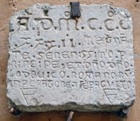


The magistrates of Amelia originally met in the Palazzo degli Anziani (1216) in what is now Piazza Matteotti, but this building collapsed in 1817, when the cisterns below gave way. The present Palazzo Comunale was adapted from the nearby palace of Anchise Cansacchi.
The Sala Consiliare contains interesting frescoes (16th century) that have recently been restored. Visits can be arranged by calling 0744 976220 (or by e mail: lucia.lucciarini@comune.amelia.tr.it).
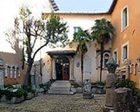
Archeological Fragments
Roman Arches
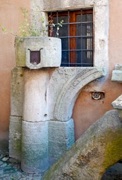
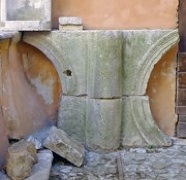
These fragments (one on each side of the courtyard), which were apparently unearthed during the excavations near Sant’ Elisabetta (also called Santa Lucia - see the Walk around Amelia) in 1839-40, may have come from the Roman theatre. Other related finds from these excavations are now in the Museo Archeologico.
Arches and Columns (ca. 1200)
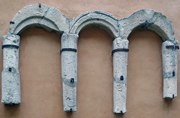
The arches recomposed on the walls of the courtyard probably came from the church of Santa Firmina at Luchiano, which was excavated in 1931. This church had probably originally housed the relics of SS Firmina and Olympias.
Inscription (1332)
